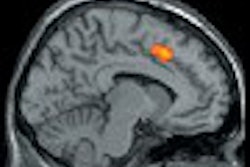Dear X-Ray Insider,
Halloween conjures up visions of ghosts and goblins, spooks and specters, trick-or-treating, and, of course, skeletons. In the make-believe world of All Hallows Eve, every skeleton boasts a finely formed and mineral-dense bone structure with nary a hint of osteoporosis.
But patients in the real world present with varying degrees of bone mineral density (BMD). Dual-energy x-ray absorptiometry (DEXA) exams can provide critical information for diagnosing osteoporosis, assessing the risk for fractures and bone disorders, and selecting patients as candidates for drug therapy and follow-up.
Radiologists need to pay attention to the images as well as to the quantitative report when interpreting these images, according to Dr. Leon Lenchik from Wake Forest University School of Medicine in Winston-Salem, NC.
Lenchik noted that the DEXA image offers critical information on patient positioning, scan analysis, and image artifacts that isn’t obvious by just looking at the BMD, T-score, or Z-score numbers. As a result, DEXA scanning requires a multitask approach for optimal results.
In an Insider Exclusive article by staff editor Shalmali Pal, Lenchik offers protocols and pearls for performing and assessing premium DEXA scans. As an X-ray Insider subscriber, you have access to this story before it is published for the rest of our AuntMinnie.com members this Friday, October 31. To discover more about performing and reading DEXA studies, click here.
Also, if there’s an x-ray imaging topic you’d like to see us write about, or you would like to author an article for us, please contact me at [email protected]. I look forward to hearing from you!



















